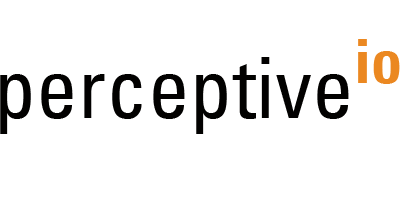Invited Talk by Dr. Sean Ryan Fanello and Dr. Christoph Rhemann from PerceptiveIO?

|
Dr. Sean Ryan Fanello and Dr. Christoph Rhemann
PerceptiveIO?
- Date: Thursday, October 19, 2017
- Time: 16:00 - 17:00
- Location: FMI 00.12.019 (MI Building, Campus Garching), Boltzmannstr. 3, Garching b. München
|
Talk Overview
Title:
The Need for Speed in Computer Vision
Abstract:
Depth cameras are becoming key tools for computer vision tasks ranging from hand, body or object tracking, 3D reconstruction and simultaneous localization and mapping. Almost all these tasks need to solve a
tracking problem i.e. each new frame of depth and image data is correlated to the previous, and this temporal information allows for faithful pose and/or geometry reconstruction over time. However, this reliance on temporal information, makes tracking problems hard to solve when using sensors running at 30fps, due to susceptibility to high frame-to-frame scene motions and artifacts such as motion blur. Using high speed depth cameras would greatly simplify these problems and make them more tractable, but despite significant research efforts, no existing high framerate and high quality depth algorithm, and hence camera exists.
In this talk we are going to demonstrate a 3D capture system for high speed and high quality depth estimation, and show its advantages in a variety of computer vision tasks. Our hardware and software depth pipeline can run at 1.1msec with modern GPUs and readily procurable camera and illumination components.
Biography:
Sean Ryan Fanello has received his Bachelor and Master degrees from Sapienza University of Rome where he worked on 3D Reconstruction and Gesture Recognition. He received his
PhD? in Robotics from the University of Genoa and Italian Institute of Technology where he designed and implemented the iCub perception system. In particular, he worked on algorithms for 3D estimation, hand-eye calibration, egomotion estimation, action recognition and object recognition. After his
PhD?, he spent 3 years at Microsoft Research. His research is mainly focusing on the intersection among Machine Learning, Computer Vision and Natural User Interfaces. At Microsoft he has developed new technologies for 3D estimation that have been deployed on the Microsoft Hololens headset. He was one of the leading members of research projects like Holoportation where they showed the first 3D telepresence system with HD quality. Currently he is a founding team member of perceptiveIO. At perceptiveIO he is developing novel 3D sensing capabilities, natural user interfaces and computer vision applications.
Christoph Rhemann is a computer vision researcher working on novel 3D depth sensing technology. He has expertise
in stereo reconstruction, structured light, time-of-flight, image segmentation and matting. His code shipped on
HoloLens?, Xbox and Surface. Key research projects include Holoportation (shown at TED 2016),
HyperDepth?,
PatchMatch? Stereo,
CostFilter? Stereo. His
work was published at top tier conferences including CVPR, ICCV, ECCV, IJCV, PAMI, SIGGRAPH, SIGGRAPH ASIA, UIST and CHI.
Christoph Rhemann is currently a Senior Scientist and Founding Team Member at perceptiveIO, a Bay Area startup
working on real-time computer vision. Previously, he spent 4 years at Microsoft Research and 2 years as a
PostDoc? Researcher at Vienna University of Technology where he also received his
PhD? under the supervision of Margrit Gelautz (TU Vienna) and Carsten Rother (Microsoft Research Cambridge).


